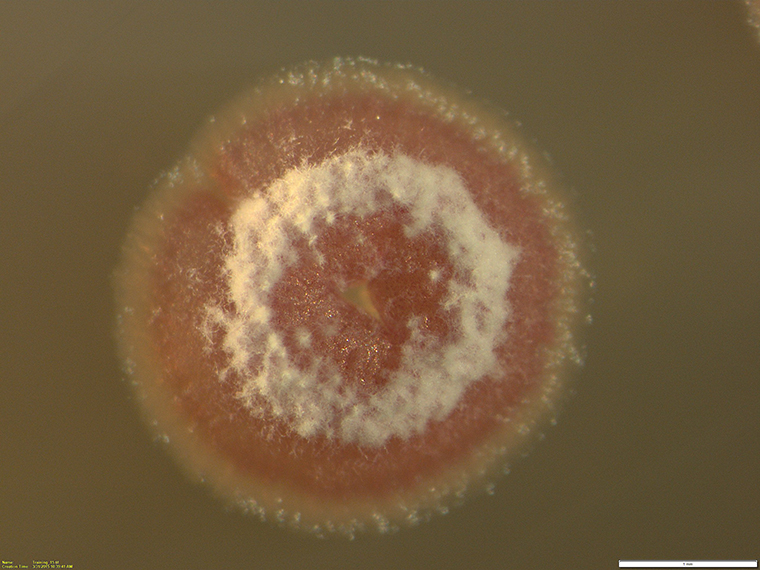In the 1940s, Streptomyces griseus gave us streptomycin, the first bacterial antibiotic that revolutionized the treatment of pulmonary tuberculosis. Fast forward to 2021 and an untapped trove of desirable drug-like molecules still remains hidden in Streptomyces genomes - but proves challenging to isolate.
Now, scientists at Washington University in St. Louis are trying to understand the genetic components responsible for the “silencing” that hinders compound production. Their findings were published this week in the Proceedings of the National Academy of Sciences.
“Bacteria encode for drug-like molecules in discreet gene clusters,” said Joshua Blodgett, assistant professor of biology in Arts & Sciences and corresponding author for the study. “To simplify the drug discovery process and amplify amounts of certain desired product, scientists often perform genome minimizing to remove clusters that they think may be competing with the one they are interested in.”
Blodgett’s team, including graduate student Yunci Qi and postdoctoral research associate Keshav Nepal, found an example where silencing one gene cluster can actually shut down another.

“Our data indicate genome minimization can sometimes have unintended consequences,” Blodgett said. “We caution the field from always expecting that removing unwanted gene clusters will result in production of the one you want. We found an example where the opposite is true.”
A pink sludge
Blodgett and his team went back to the fundamentals in their study.
“We streaked several related Streptomyces bugs on a plate,” Blodgett said. “On those plates, we knew there were examples of either good producers or bad producers of our target antibiotic called polycyclic tetramate macrolactam (PTM). After a few days, we looked at the plates and noticed something was different.”
The good producers were pink in color, while the bad producers were not. PTM molecules are colorless, and the scientists identified the pink compound as the pigment griseorhodin. This was interesting because the building blocks that make griseorhodin are also needed by cells to make PTM.
“The pink sludge was a pain. We wanted to get rid of it so we forced the bugs to stop making griseorhodin. We thought that would leave more building blocks to make PTM, but the opposite happened,” Blodgett said.
It turns out that there’s something associated with the pink sludge that the bugs need to make the antibiotic. When griseorhodin was not produced, neither was PTM.
“This result is bizarre and unpredictable. If we could figure out the mechanism, then we will be able to add to our list of what makes good versus bad producers and understand the hierarchical structure of Streptomyces regulation of antibiotic production,” he concluded.
A handful of nucleotides matter, too

As an industry scientist leading a team at pharmaceutical company WarpDrive Bio, Inc before coming to Washington University, Blodgett compared promoters, the genetic switches that turn genes on and off, among good and bad drug producers. Looking at different bugs making different drugs, he found that one or two missing letters in the genetic message can cause genes to turn on.
Could the same be true for PTM production in Streptomyces griseus? Using a powerful comparative metabologenomic approach, his team compared genomes across Streptomyces griseus siblings and cousins.
“We asked when there are small genetic differences in the promoter region, do they pair with changes in antibiotic production?” Blodgett said.
Ultimately, Blodgett and his team pinned down the genetic differences in the promoter region that affected antibiotic production to a few missing nucleotides, a trend that echoes what he discovered hidden in genomes at WarpDrive Bio, Inc. However, this time the location and genomic context of these deletions was different.
“Here, we found that two to three nucleotides are missing downstream of the RNA polymerase binding site. Naturally missing just a few nucleotides in this region strongly reduces PTM production in our assays,” Blodgett said.
“We hope these findings can inspire other research teams to use comparative metabologenomics to further understand silent cluster controls and work towards new therapeutics,” Blodgett said.




